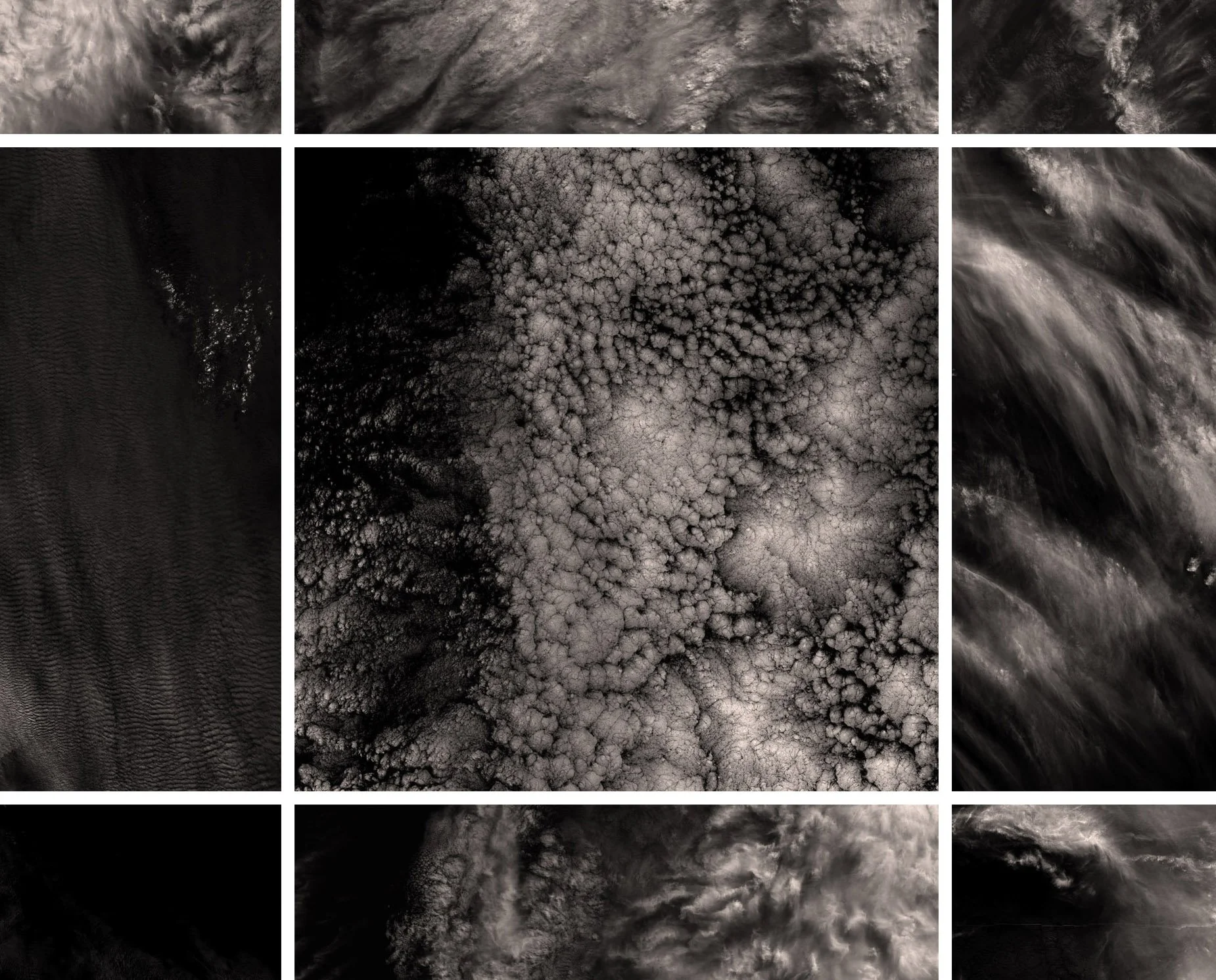Sampling the Cirrus Band
Displayed in a big grid of images, three metres tall and six metres long, the images in this work are derived from the “cirrus” band of the Landsat 8 satellite, and show a series of cloud formations over the Great Australian Bight.
Satellite sensors are multi-spectral, recording discrete wavelength ranges of the electromagnetic spectrum in separate “bands” which are combined in different ways to highlight environmental phenomena.
In addition to bands for visible and infrared light, Landsat 8 records a single extremely narrow band in the shortwave infrared, 1.36-1.39 microns, designed solely to gather images of cirrus clouds. Cirrus are very high and very cold, and their thin wispy forms are often difficult to see and so constitute a form of noise in optical data; the cirrus band is recorded so it can be used for filtering and correcting for cloud noise.
In other words, Landsat 8 records images of cirrus clouds the world over, solely in order to remove them from the record. These stunning and dramatically lit confections of wispy cloud and towering thunderstorms are gathered for algorithmic purposes and are never meant to be seen by human eyes.
Exhibition History
20025: Noordelict festival, “Machine Entanglements.”
2024: “Strange Weather”, University of the Sunshine Coast art gallery, part of ISEA “Everywhen.”





